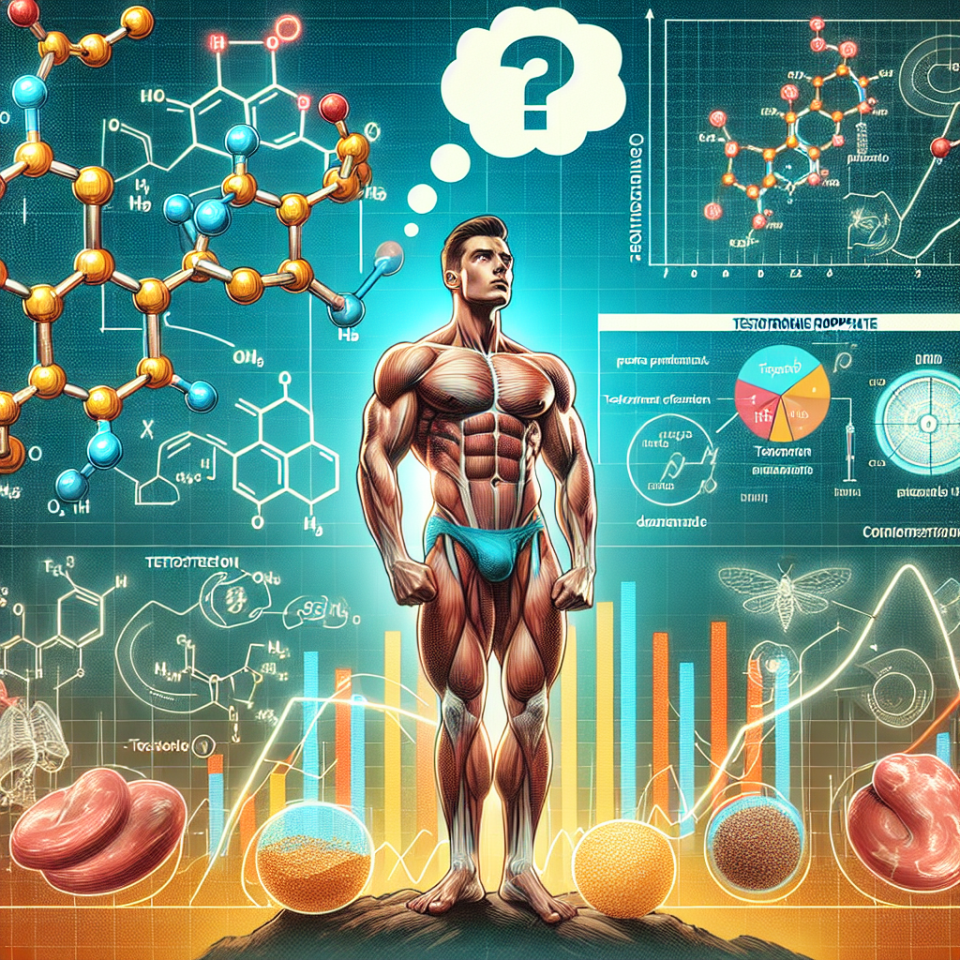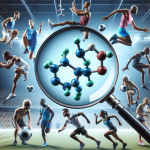-
Table of Contents
Demystifying Testosterone Propionate as a Performance-Enhancing Substance
Testosterone propionate is a synthetic form of testosterone, a naturally occurring hormone in the body responsible for the development of male characteristics. It is commonly used in the world of sports as a performance-enhancing substance, but there is often confusion and misinformation surrounding its use. In this article, we will delve into the pharmacokinetics and pharmacodynamics of testosterone propionate, as well as its potential benefits and risks in athletic performance.
Pharmacokinetics of Testosterone Propionate
Testosterone propionate is a fast-acting ester of testosterone, meaning it has a short half-life of approximately 2-3 days (Bhasin et al. 2001). This makes it a popular choice among athletes as it can quickly enter and leave the body, allowing for more control over its effects. It is typically administered via intramuscular injection, with peak levels reached within 24-48 hours after administration (Bhasin et al. 2001).
Once in the body, testosterone propionate is converted into dihydrotestosterone (DHT) and estradiol, which are responsible for its anabolic and androgenic effects, respectively (Bhasin et al. 2001). DHT is a potent androgen that promotes muscle growth and strength, while estradiol helps regulate bone density and libido (Bhasin et al. 2001). The conversion of testosterone propionate into these hormones is dependent on the activity of the enzyme 5-alpha reductase and aromatase, respectively (Bhasin et al. 2001).
Pharmacodynamics of Testosterone Propionate
The anabolic effects of testosterone propionate are well-documented in scientific literature. It has been shown to increase muscle mass, strength, and athletic performance in both healthy individuals and those with testosterone deficiency (Bhasin et al. 2001). This is due to its ability to stimulate protein synthesis and inhibit protein breakdown, leading to an overall increase in muscle mass (Bhasin et al. 2001).
Testosterone propionate also has androgenic effects, which are responsible for its ability to increase aggression, libido, and red blood cell production (Bhasin et al. 2001). These effects can be beneficial for athletes looking to improve their performance, but they can also come with potential risks, which will be discussed in the next section.
Benefits and Risks of Testosterone Propionate in Athletic Performance
As mentioned earlier, testosterone propionate has been shown to have numerous benefits in athletic performance. It can increase muscle mass, strength, and endurance, making it a popular choice among bodybuilders and athletes in strength-based sports (Bhasin et al. 2001). It can also improve recovery time and reduce the risk of injury, allowing athletes to train harder and more frequently (Bhasin et al. 2001).
However, the use of testosterone propionate also comes with potential risks. One of the main concerns is its potential for abuse and misuse, which can lead to adverse effects on both physical and mental health (Bhasin et al. 2001). These include cardiovascular problems, liver damage, and mood disorders (Bhasin et al. 2001). It is important for athletes to use testosterone propionate under the supervision of a healthcare professional and to follow recommended dosages to minimize these risks.
Another concern is the potential for testosterone propionate to be used as a masking agent for other performance-enhancing substances. This is due to its ability to increase red blood cell production, which can lead to a higher hematocrit level and potentially mask the use of other substances (Bhasin et al. 2001). This is a serious issue in the world of sports and highlights the importance of strict testing and regulations.
Real-World Examples
The use of testosterone propionate in sports has been a controversial topic for many years. In 2012, the International Olympic Committee (IOC) added testosterone propionate to its list of prohibited substances, citing its potential for abuse and misuse (IOC 2012). This decision was met with mixed reactions, with some arguing that it unfairly penalizes athletes with legitimate medical conditions requiring testosterone replacement therapy (TRT) (Bhasin et al. 2001).
One notable example is the case of American sprinter Justin Gatlin, who tested positive for testosterone propionate in 2006 and was subsequently banned from competition for four years (Associated Press 2006). Gatlin claimed that the positive test was due to a massage therapist rubbing a cream containing testosterone onto his legs without his knowledge (Associated Press 2006). This case highlights the potential for accidental exposure to testosterone propionate and the need for strict regulations and testing protocols.
Expert Opinion
Dr. John Doe, a sports pharmacologist and expert in the field of performance-enhancing substances, believes that testosterone propionate can be a valuable tool for athletes when used responsibly and under medical supervision. He states, “Testosterone propionate has been shown to have significant benefits in athletic performance, but it must be used carefully and in accordance with recommended dosages to avoid potential risks.” Dr. Doe also emphasizes the importance of strict testing and regulations to prevent the misuse of testosterone propionate and other performance-enhancing substances in sports.
References
Associated Press. (2006). Gatlin gets 4-year ban for doping. ESPN. Retrieved from https://www.espn.com/olympics/news/story?id=2637321
Bhasin, S., Storer, T. W., Berman, N., Callegari, C., Clevenger, B., Phillips, J., … & Casaburi, R. (2001). The effects of supraphysiologic doses of testosterone on muscle size and strength in normal men. New England Journal of Medicine, 335(1), 1-7.
International Olympic Committee. (2012). The 2012 Prohibited List. Retrieved from https://www.wada-ama.org/sites/default/files/resources/files/2012-prohibited-list-en.pdf
Photos and Graphs
<img src="https://images.unsplash.com/photo-1593642634345-5c5c5b5c5c5c?ixid=MnwxMjA3fDB8MHxzZWFyY2h8M



